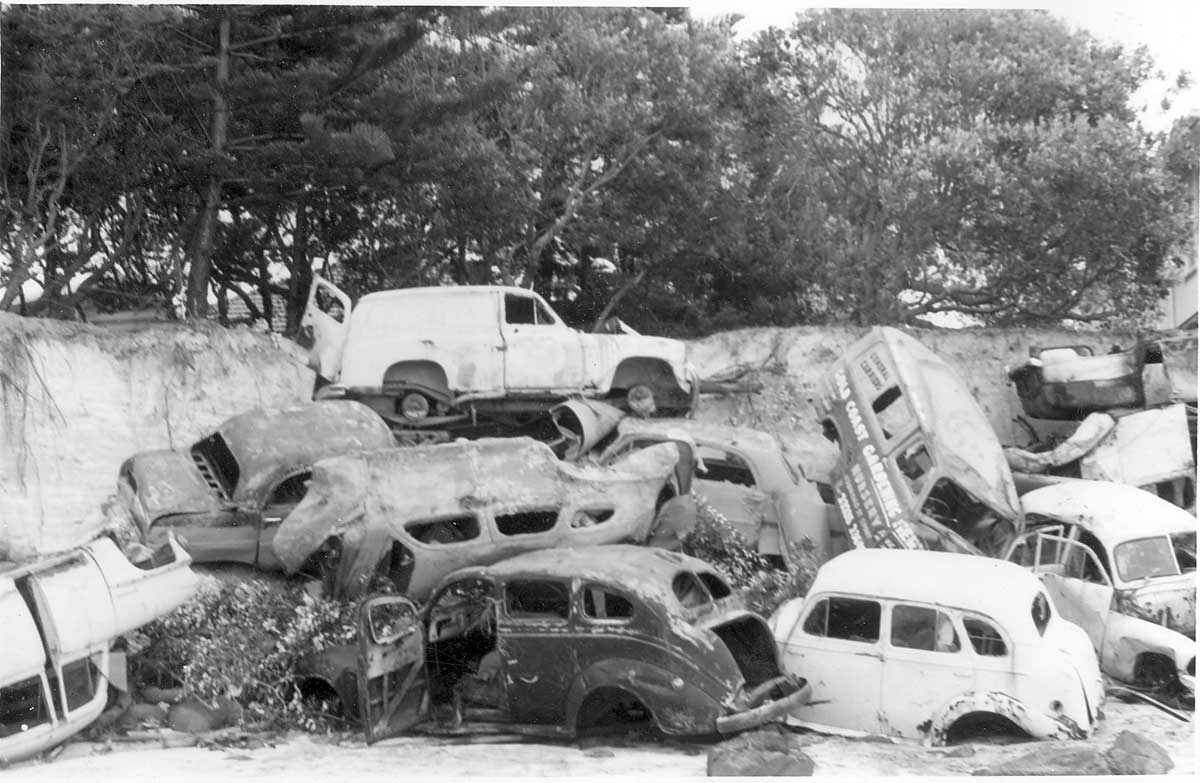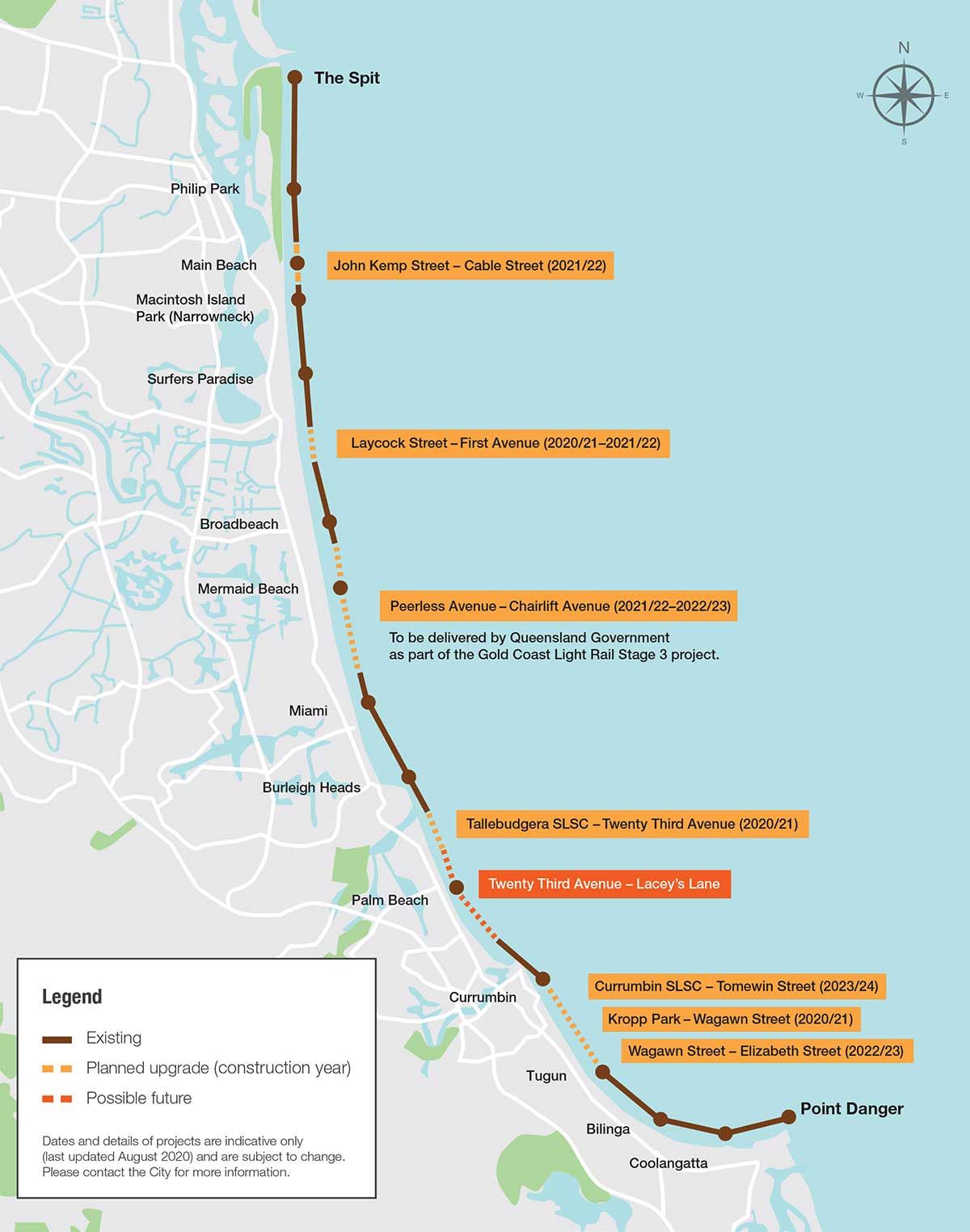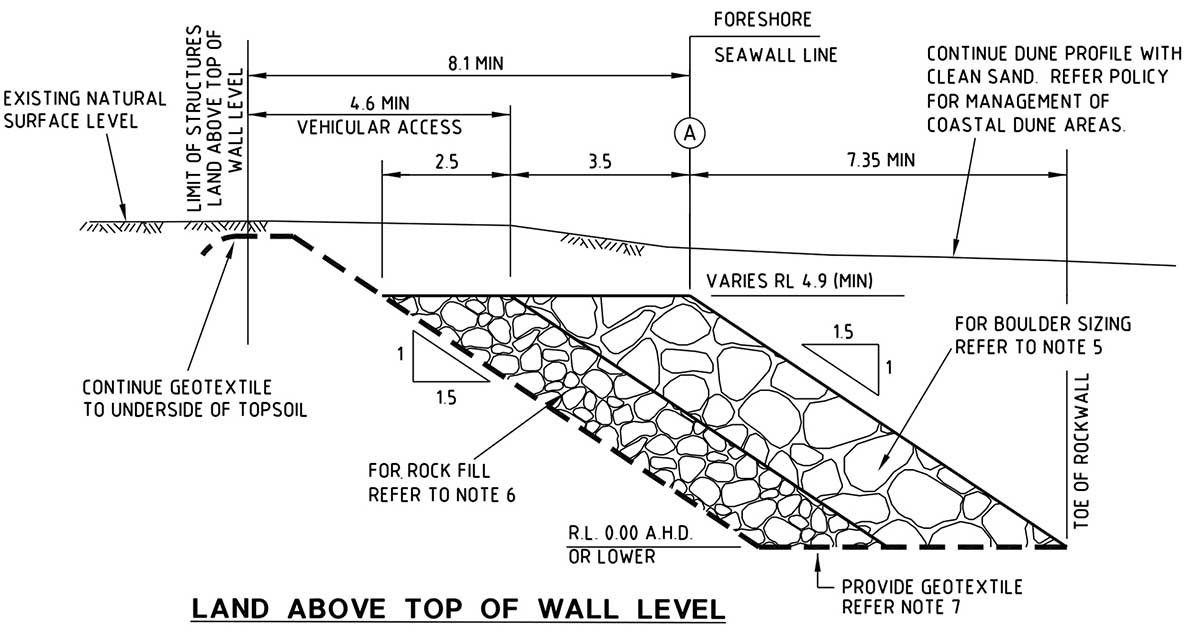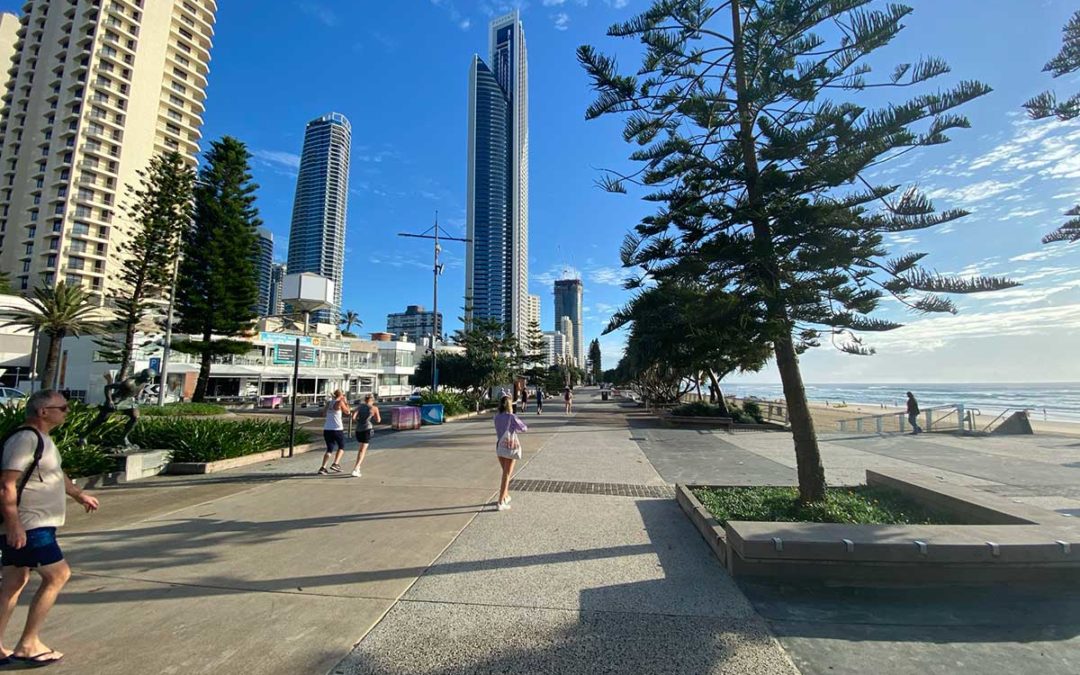A cautionary tale
Lately there has been a lot of local press regarding the Oceanway.
This shared cycle and pedestrian path currently runs 36 of the 56 kilometres along the coastline of the Gold Coast from the Seaway at the tip of the Spit to Point Danger at Coolangatta.
Unfortunately, this Oceanway is not a continuous path, several key links are missing requiring detouring off the beachfront to streets behind. For more information as to where these broken links occur view https://www.goldcoast.qld.gov.au/thegoldcoast/gold-coast-oceanway-47660.html
It is the proposed construction of the missing sections of Oceanway in front of prime beachfront homes and high-rise buildings that is resulting in confrontation between these landowners, certain public interest groups, and the State / Local Government authorities.
The land in front of these properties is public land controlled by the Government, and in many cases are gazetted roads that have never been constructed.
Over time some of these beachfront owners have utilised this land as an extension of their own property, even installing fences and landscaping making it difficult for the public to access.
This has angered some sectors of the broader community who demand unfettered access to this public land, whilst the beachfront landowners wish to maintain the status quo and the relative privacy it ensures.
One of the key factors that will determine if these links ultimately proceed in front of these private properties is the construction of the seawall that also runs the length of the coastline.
Seawall Background
Coastal erosion during extreme storm events has long been an issue for beachfront development on the Gold Coast.
In the past destructive cyclones have wrought havoc on the beachfront in 1938, 1954, four successive cyclones and three East Coast Lows within 6 months in 1967, and three cyclones in 1974.
Some footage and photos of these events can be viewed at https://youtu.be/I_ubPdLqUwA
In response, seawalls were constructed, initially built using easily sourced timber logs, sandbags and rock. After the devastating successive weather events in 1967, access to quarries for suitable rock was limited and so less suitable car bodies were used to absorb the wave energy and minimise scouring of the foreshore.

Following this major erosion event, the State Government approved an engineered seawall to be constructed the entire length of the coastline. This buried protective barrier is constructed to specific design criteria and built along a designated alignment known as the A-Line.
For more information about the A-Line seawall view https://youtu.be/meuAFwMtomo.
Whilst the Government is responsible for constructing this barrier to protect the beachfront Esplanades and public infrastructure, private landowners are responsible for building these boulder walls to protect their own properties.
There is however currently no onus on existing property owners to build this wall unless they redevelop their land, at which time Council enforce a planning constraint on the development to ensure it is constructed.
At a cost of about $100k to build this seawall structure to the width of a typical beachfront lot, most existing property owners have chosen not to do so of their own volition.
Much like the Oceanway, this has resulted in sections of A-line that have not been completed, and Council have no records of any older seawalls in front of private properties that may exist.
Council have now built or certified 80% of the public seawalls protecting public assets, however, it is estimated that only 53% of private properties are protected by a compliant barrier.
The Current Conflict
Works were due to commence shortly on one of the missing Oceanway Links just south of Surfers Paradise between Laycock Street and First Avenue.

Affected beachfront landowners commissioned a legal report which has identified risks associated with constructing this new public asset over land that may or may not be protected by existing seawalls, compliant or otherwise.
This legal stoush has prevented these works from commencing, and the outcome will be closely monitored by landowners further south in Hedges Avenue and Jefferson Lane where numerous expensive private houses enjoy direct beach access.
A cautionary tale
A key point that has not been highlighted in the recent debate is the impact on property owners when they do decide to redevelop their site where the Oceanway has already been constructed without a protective seawall in place.
We ‘ve recently had firsthand experience of the issues that owners face at our beachfront project which was due to commence construction in January this year.
The Tugun section of Oceanway was completed in front of our client’s property within the past few years.

A condition of the Development Consent we achieved to build a new home on the site was to confirm that a compliant seawall has been constructed to the A-line.
The first issue our client faced was determining if there was already an existing seawall constructed in front of their site. As major public infrastructure adjoins the site in the form of pipework feeding saltwater to the Tugun desalination plant, there was the possibility that such important and expensive infrastructure may have been provided with additional protection in the form of a longer seawall.
Council have recently undertaken detailed survey works along the coastline to identify where existing boulder seawalls have been constructed. This information however is not available to the public, or to impacted landowners.
After lengthy consultation with numerous Council departments, our client was eventually provided with a plan confirming that no approved wall had been constructed in front of their site.
Having confirmed that they needed to construct a seawall, even though the A-Line was significantly seaward of their property boundary and beyond the designated seawall setbacks (refer to diagram below), the DA conditions preclude them from commencing any building work or excavation on their site until the seawall has been constructed and certified.

This is despite all new coastal developments subject to potential sand scour from future storm events requiring extensive piled footings extending down to bedrock. This ensures the building will not collapse even if the seawall fails and the entire site under and around it is washed away. Delaying construction of the residence therefore achieves no tangible benefit whilst incurring unnecessary additional costs to the landowner.
In January the Builder appointed to the job commenced the process of obtaining the necessary State and Local Government Approvals to demolish the new Oceanway in front of our client’s property to enable construction of the mandated seawall.
In the meantime, a nearby oceanfront site had already commenced construction of a seawall in front of their property necessitating temporary closure of the Oceanway and detouring pedestrians about 60m onto a nearby street.
Unfortunately, this occurred towards the end of the Christmas School holidays and the minor inconvenience upset some members of the community, attracting negative local press and subsequent political intervention.
Suddenly new rules were applied to prevent any development which might necessitate closure of the Oceanway occurring during future school holidays.
Meanwhile the approval process for our project has continually been frustrated by Council bureaucrats providing conflicting information as to what approvals are required to demolish and rebuild portions of the Oceanway. As a “new asset”, it appears Council do not currently have a specific department responsible for overseeing works undertaken by landowners adjacent to this public infrastructure.
Applications were made, then advised as unnecessary and fees refunded, only to be advised days before works were finally due to commence (after waiting for the Easter School holidays to finish) that they were in fact required. Assessment time advised, 15-20 working days, no fast-track options available. This means there is a very real possibility that works could extend into the next school holidays, which would necessitate holding off commencing construction until July when they are over. An unnecessary and very expensive 6-month delay.
In addition, we have recently been advised that public access will need to be maintained through the site during construction, despite the obvious safety risk associated with heavy machinery delivering and manoeuvring large boulders in a confined space smaller than a tennis court.
The Builder has now been forced to engage safety access consultants to prepare a report confirming that this latest condition is totally impractical and could result in serious injury or even loss of life.
We understand the need for regulations and approvals, however when landowners are subjected to significant unforeseen additional costs and time delays through no fault of their own, this needs to be highlighted and those responsible held accountable.
At the very least Council need to provide a clear set of guidelines outlining the approval process at the time of conditioning a new Development, rather than reactively imposing new constraints on property owners without any warning.

Want to see more of this proposed “Oceanway” home when it is eventually completed? https://vimeo.com/427904711
You might also be interested in...

Designing for the Future
Architects must be aware of the latest advances in technology, materials, and societal changes ahead to impact greatly on how we will live.

Modular Construction – Is it the Future?
Modular construction has been touted for decades as the future direction of building, however in Australia it is yet to gain the level of acceptance that it already has in Europe and Japan where it is widely embraced. Unfortunately, here in Australia it is imbued with...










